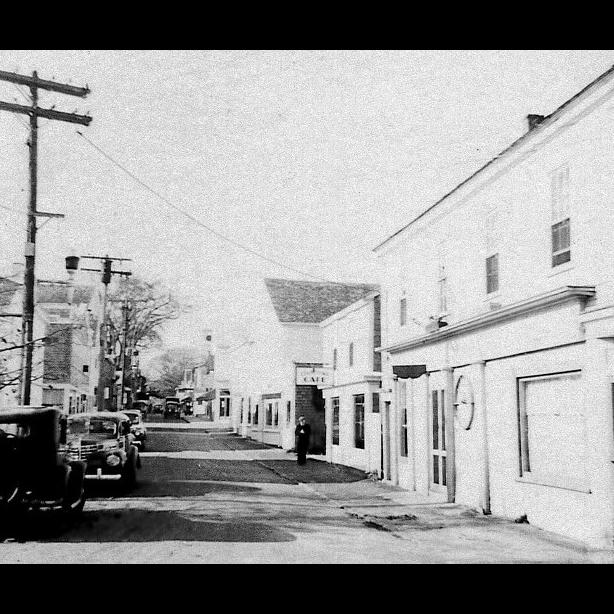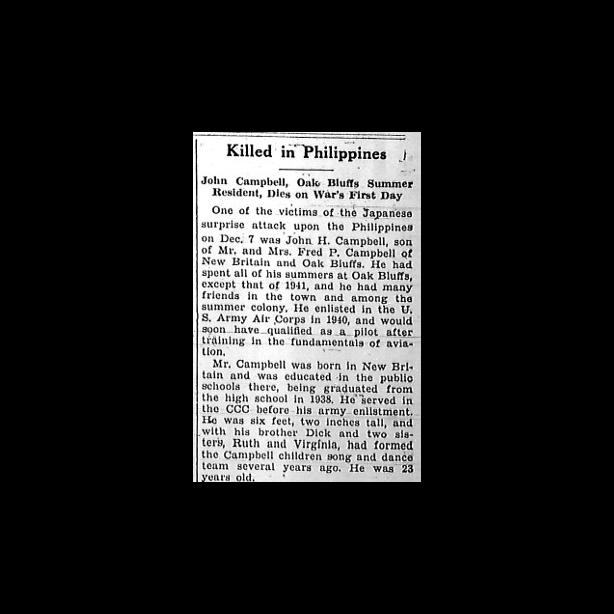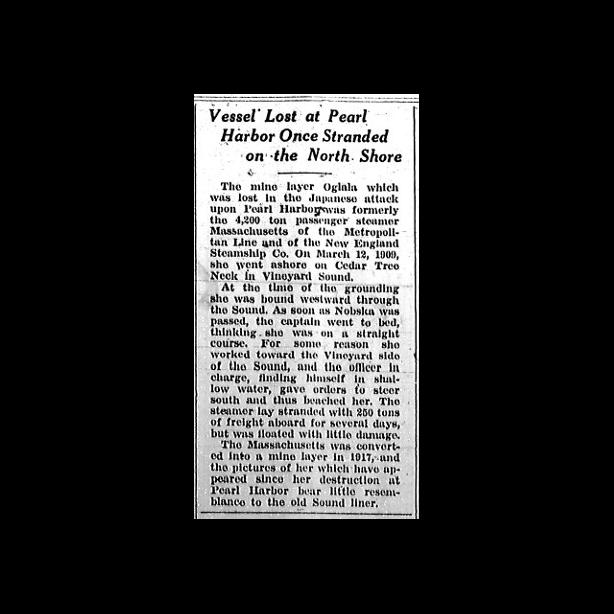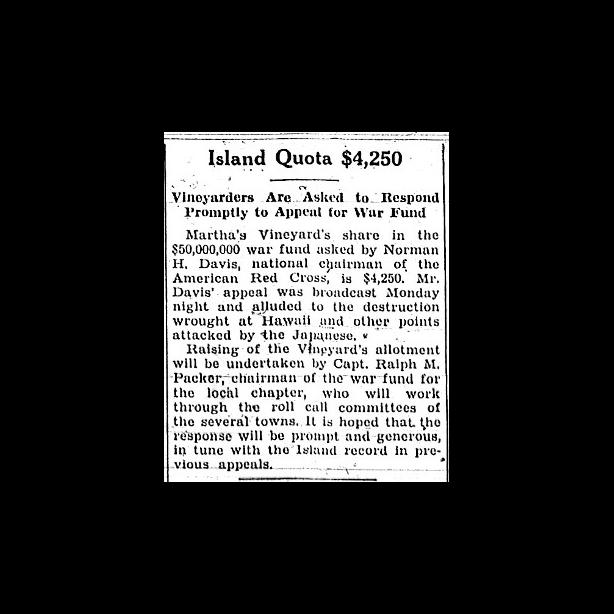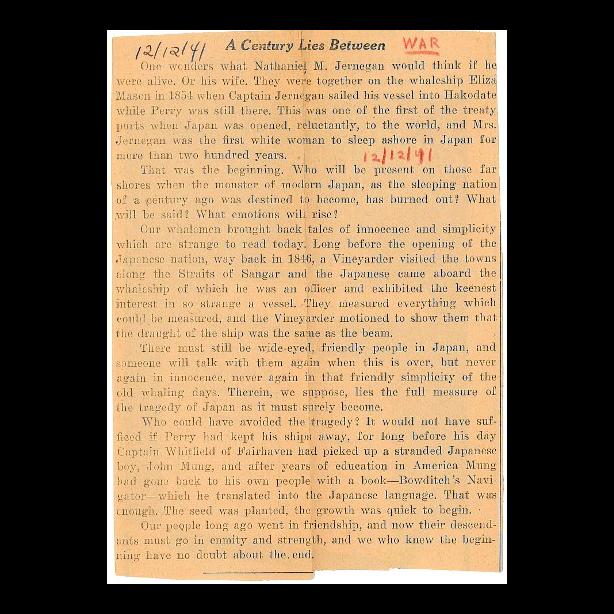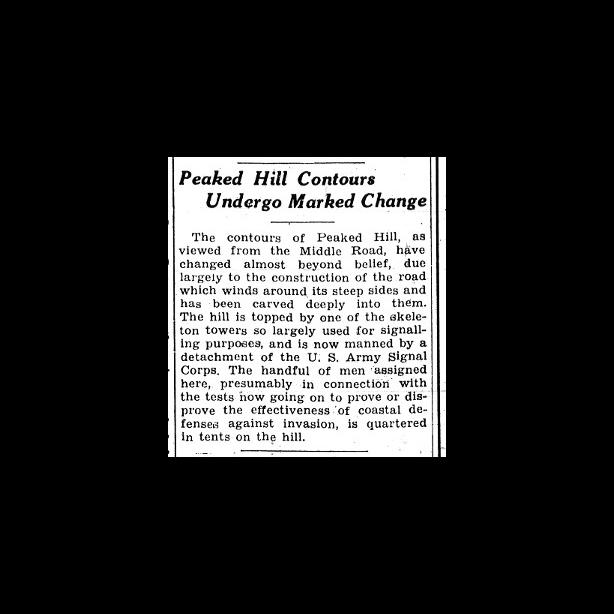World War Two
World War Two
January 2, 1942
Tire-Rationing Boards Appointed on Vineyard
The setting up of tire-rationing boards in Island towns this week brings the war yet nearer to the Vineyard. These rationing committees one in each town of the Island, were appointed and set up under instructions which came direct to the chairmen of all board of selectmen on Monday night from a former governor, Joseph B. Ely, who is the state administrator of tire rationing.
December 26, 1941
Killed in Philippines
December 19, 1941
Killed in Action
December 19, 1941
Vessel Lost at Pearl Harbor Once Stranded on the North Shore
December 12, 1941
Rod and Gun Club Ready to Form Shotgun Brigade
December 12, 1941
Vineyard Boys Serving in Far Eastern Forces
December 12, 1941
Island Accepts Challenge of Air Alarm Quietly
December 12, 1941
Island Quota $4,250
December 12, 1941
Editorial: A Century Lies Between
October 17, 1941
Peaked Hill Contours Undergo Marked Change
The contours of Peaked Hill, as viewed from the Middle Road, have changed almost beyond belief, due largely to the construction of the road which winds around its steep sides and has been carved deeply into them. The hill is topped by one of the skeleton towers so largely used for signaling purposes, and is now manned by a detachment of the U.S. Army Signal Corps. The handful of men assigned here, presumably in connection with the tests now going on to prove or disprove the effectiveness of coastal defenses against invasion, is quartered in tents on the hill.

